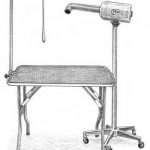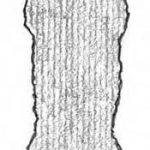Taking Basic Care of Your Poodle’s Health

In This Chapter
- Selecting and visiting a vet
- Organizing a regular checkup schedule
- Opting for alternative medicine
- Getting the facts on vaccinations
- Considering spaying or neutering your Poodle puppy
- Taking care of your Poodle’s health at home
You’ve been a busy Poodle owner lately! You’ve found your perfect companion and readied your home for her arrival; you may have even drawn up a training schedule that you can’t wait to start. However, one of the most important aspects of animal ownership awaits you: Securing medical care for your Poodle. You can start your Poodle on the path to a long and healthy life by finding a reputable veterinarian in your area and starting her a vaccination schedule.
Choosing the Right Veterinarian and Setting a Schedule
Knowing what to look for in a vet
Remember
Asking friends who have dogs for vet recommendations is a good place to start. Your breeder or rescue group may also be able to give you some tips. Keep the following points in mind as you go over your choices:
– How far is the vet’s office from your home? You may have heard great things about a particular vet, but if his office is 20 miles away, he may not be the best choice for you. However, you shouldn’t automatically use the vet next door. Distance should be a factor in choosing your vet, but it shouldn’t be the only factor.
– Do you prefer a hospital with more than one vet, or do you want the personal touch of a one-doctor practice? At a small practice, the vet gets to know your Poodle personally and will have an understanding of her entire health history, but in an emergency, if you need to go to a different practice, your dog’s records won’t be on file. At a large practice, you may see a different doctor for each visit, but no matter who sees your dog, he has access to all her health records.
– How does the vet handle emergency and off-hours visits? At a large practice, the vets probably rotate being “on call,” so a doctor is always available for an emergency. At a single-vet practice, you need to find out how it handles emergencies? Do you have an emergency veterinary clinic in your area? Does another practice cover for your vet during off-hours? Can you page the vet if you have an emergency?
Tip
In most larger cities, you can find at least one emergency veterinary clinic that handles after-hours cases. Ask your vet if he has a preferred ER clinic and where it is located and its hours of operation. If you have to use an emergency clinic, drive to it at least once, so you will know the way and not lose time finding it in an emergency.
– Do you want a traditional veterinarian, a holistic vet, or a vet who combines the traditional Western approach with acupuncture and herbal treatments (which I cover later in this chapter)? Don’t expect your vet to change his ways to meet your needs. Find out what a practice offers before you make your choice.
– Are the staff members at the vet’s office helpful, courteous, and nice to the animals? To get a good feel for the staff, you need to find an office before you’re desperate for one. You can build a rapport with the staff if you check the office out before you get your Poodle. With one visit, you can get a general feel for whether the staff is friendly or all business.
– Is the vet’s office (and other work areas) clean? The waiting room, as well as the individual examining rooms, should be clean.
– Do you like the vet? No matter how highly recommended a vet may be, if you don’t get a good vibe from him and you aren’t comfortable in his presence, you should find another vet. You and your vet are partners when it comes to your Poodle’s health, so open communication is very important.
Asking a potential vet important questions
Remember
Sometimes, you just can’t tell whether a potential vet is right for you and your Poodle without actually making an appointment and talking with him. A vet’s office can be clean and close, and his staff can be friendly, but you need to get to know his views and principals to be comfortable with him as your vet. Be sure to cover the following topics during your interview — the answers should help you make your choice:
– Vaccinations: Which vaccinations does he routinely give? How often does he vaccinate? Some vets view certain vaccines as requirements, and others think they’re optional. Many doctors no longer give boosters every year. In addition, does the vet consider titer testing, which evaluates an animal’s level of immunity to a disease, instead of routinely revaccinating? (For more on vaccinations, see the later section “Taking a Shot at Good Health with Vaccinations”.)
– Second opinions and specialists: Most vets don’t hesitate to refer you to a specialist if you have questions and concerns about a diagnosis. If your area doesn’t have a specific specialist, you can ask for a referral to a veterinarian college. Ask whether he has a problem with you seeking a second opinion or wanting a specialist to look at your dog. Ask whether he routinely consults with any specialists in the area.
– Alternative healthcare: You may be interested in combining traditional medicine with alternative forms of healthcare. Some vets combine traditional Western medicine with other treatments, such as acupuncture, herbal treatments, and chiropractic techniques. Other vets recommend that you see a specialist for these treatments if they don’t offer the service themselves. Ask the vet which, if any, alternative forms of healthcare he practices. Ask whether he can refer you to practitioners. You may discover that a particular veterinarian won’t treat your dog if you use alternative forms of medicine. You have to make the final decision on the type of care you want, because you won’t change your vet’s mind. (I cover alternative forms of healthcare later in this chapter.)
– Experience with the health needs of Poodles: Ask the vet about his familiarity with medical conditions that occur in Poodles, such as hip dysplasia in a Standard Poodle or patella luxation in Toys or Miniatures. A complete list is available at www.poodleclubofamerica.org.
Setting up regular checkups
Remember
Along with the vaccination schedule you and your vet decide on (find out more about vaccinations later in this chapter), you need to book an annual exam schedule. Regular checkups give your vet a chance to check your Poodle’s vital signs, ears, teeth, eyes, and weight. Your vet also may take blood tests to make sure nothing serious is going on. A regular checkup also gives you a good chance to ask your vet any questions you may have about your Poodle’s health.
Surveying Alternative Healthcare Choices
On pins and needles: Acupuncture
– Increases blood flow, which speeds heeling
– Lowers heart rate
– Improve the function of the immune system
– Reduces the need for large amounts of pain medicine
– Encourages the release of neurotransmitters, such as endorphins (the body’s natural painkillers) and cortisol (an antiinflammatory steroid).
Technical Stuff
Reiki, which is a Japanese technique, produces results similar to acupuncture but without the needles. It eases stress and promotes relaxation and healing by helping to increase and direct a person or animal’s life force.
Warning!
A dog’s reaction may be to bite when certain points are stimulated, so if you decide to stimulate alarm points in between vet visits to make sure all is good with your Poodle, use caution.
Tip
If your current vet (or a prospective vet) isn’t familiar with acupuncture, ask him if he can refer you to acupuncturists in your area. If that route fails, you can search for veterinary acupuncturists by state at the International Veterinary Acupuncture Society Web site, www.ivas.org.
Back to basics: Chiropractic medicine
Remember
If you suspect that your Poodle is having back issues, have your veterinarian examine your dog first to make sure she has no other causes for the soreness or lameness, such as a tumor. If your vet rules out serious illness, he may refer you to a veterinarian who specializes in chiropractic work. Some people take their dogs to chiropractors for humans if they can’t find chiropractic veterinarians.
Tip
To find out more about chiropractic adjustments for animals, visit the Web site for the American Veterinary Chiropractic Association, at www.animalchiropractic.org.
Doggie day spa: Massage treatment
Remember
Massaging isn’t a substitute for veterinary care. If your Poodle is limping or in pain, you need to make an appointment with your veterinarian. If he gives you the go-ahead to massage along with administering any medications he provides, you’ve done your due diligence.
Warning!
Much of massaging is just extended stroking, but you need to pay attention to how your Poodle reacts to a massage. If you seem to be hurting or annoying your dog, stop the massage. Not every dog loves every kind of massage, and the point of a massage is to soothe and relax your dog, not annoy her.
All-natural: Herbal treatments
– Pungent herbs help with circulation problems.
– Sweet herbs relieve pain and slow the progression of diseases.
– Sour herbs solidify. If your Poodle has diarrhea, a veterinarian trained in the proper use of herbs would prescribe a sour herb.
– Salty herbs have the opposite effect of sour herbs. Vets use them to relieve constipation and to treat muscle spasms and enlarged lymph glands.
– Bitter herbs treat kidney-related diseases.
Warning!
Just because herbs are “natural” doesn’t mean that you can give them to your Poodle indiscriminately. Don’t be tempted to diagnose a condition and treat it on your own. You can make your dog sicker, or even kill her. Consult with a veterinarian who’s trained in the use of herbs, or get a referral from your veterinarian.
Buying the (state) farm: Pet insurance for your PoodleVeterinary costs continue to rise as technology improves and as animal medicine continues to follow human techniques. Dogs can get MRIs, X-rays, and hip replacements. Procedures for dogs that were unheard of ten years ago are now commonplace. Medicine is giving our dogs longer lives and a higher quality of life. But these benefits come at a cost to your wallet. Your Poodle may never ask for a pair of designer jeans or special jogging shoes, but she may require expensive medical attention in the future. During a time of crisis, you’ll want pet insurance to come to your rescue. An insurance policy for your Poodle can cost between $10 and $70 a month as of press time, although some companies offer discounts for carrying multiple pets on a policy. Like insurance for humans, pet insurance policies cover different situations. Some policies cover accidents, injuries, and illnesses, but not regular checkups. Other policies cover annual visits but not hereditary diseases or visits to specialists. You may be able to add options to the basic policy you purchase, depending on the type of coverage you want. Generally, you choose your own vet, pay the bill, and then send in your claim for reimbursement. If you want to pursue alternative therapies for your Poodle’s condition, such as acupuncture, shop around for a policy that covers this type of care. As an alternative, many dog owners open savings accounts for veterinary care. They deposit monthly sums to prepare for situations when their dogs will need something more than a booster shot. If you register your dog with the American Kennel Club (AKC), you can sign up for the AKC Pet Healthcare Plan. You can also find several insurance companies online: Before deciding on an insurance policy for your Poodle, request a complete list of what’s covered, especially exclusions of genetic conditions that can occur in Poodles. |
Tip
Many holistic vets recommend Rescue Remedy for your dog’s firstaid kit. This mixture contains five of the single Bach essences, named for Edward Bach, an English doctor who studied the healing properties of plants and identified 38 flowers and trees with specific healing powers. You use Rescue Remedy in cases of shock, collapse, or trauma. Many health-food stores carry Rescue Remedy. (See Chapter Staying Prepared with First-Aid Basics for more info on stocking your Poodle’s first-aid kit.)
Homeopathy
Tip
The concept may be hard to grasp, but one homeopathic practitioner explained it to me as being similar to a vaccine that is made from a weakened, or killed, virus. These weakened or dead germs, in vaccine form, prevent the disease that they would normally cause, were they at full strength. To discover more about homeopathy as an alternative form of healthcare for your Poodle, check out the Academy of Veterinary Homeopathy’s Web site, www.theavh.org.
Taking a Shot at Good Health with Vaccinations
Checking out available vaccines
Tip
Your area of the world may have regional diseases, so ask your vet if your Poodle needs any special vaccines, based on where you live.
Core vaccines
– Rabies: A rabies shot is the one vaccine your Poodle absolutely must have, according to state law. The shot is the only protection your Poodle has against rabies. Currently, no cure exists for rabies, which attacks a dog’s central nervous system. The animal either becomes paralyzed or enraged — the “mad dog” response with snapping, snarling, and biting randomly. The disease spreads through the saliva of bats, foxes, raccoons, and skunks. The disease is fatal after the symptoms appear.
– Distemper: Distemper is a highly contagious, deadly virus with a very low recovery rate. The virus is spread by airborne and droplets from the respiratory system of infected dogs. The threat of distemper is greatest for dogs under 6 months and over 6 years of age. The symptoms include coughing, vomiting, and fever. Add a distemper shot to your list of “must haves.”
– Parvovirus: This virus is potentially fatal, and puppies are highly susceptible to it. An adult Poodle with a mild case may recover, but puppies generally die. Symptoms include fever, lethargy, and depression. If your Poodle also starts vomiting and having bloody diarrhea along with the other symptoms, she may die no matter her age. Parvovirus is spread through the feces of infected animals. If your dog sniffs, tastes, or eats contaminated feces, she may contract parvovirus.
Noncore vaccines
– Bordetella: This highly contagious airborne disease, known as kennel cough, is caused by a virus. Its symptoms include a dry, hacking cough. In severe cases, the dog may have a persistent, low-grade fever. If your Poodle has been around other dogs and exhibits the symptoms, she may have bordetella. Check with your veterinarian.
Most boarding kennels require that dogs have a bordetella vaccination before they can gain acceptance. Although you shouldn’t take any disease lightly, you can treat kennel cough with antibiotics, and it isn’t usually serious. If you’re traveling with your Poodle or showing her (see Chapter Showing Off and Enjoying Your Poodle’s Talents), you may want to vaccinate against bordetella. Remember, though, that over 100 varieties of bordetella exist, and a vaccine only protects your Poodle against a few of them. Your dog may still get kennel cough even if you vaccinate.
– Hepatitis: The hepatitis virus spreads through the feces and urine of dogs. Its symptoms include fever and lethargy. Your Poodle may be reluctant to move. Her abdomen may be tender, and her mucus membranes may be pale. In severe cases, she may begin to vomit, have diarrhea, and cough. A dog usually can recover from a mild to moderate case of hepatitis in about a week; however, in severe cases, a dog can die.
– Leptospirosis: These bacteria are generally transmitted through the urine of rats and mice. This condition can be fatal. Symptoms of leptospirosis include vomiting, fever, and a reluctance to move. Leptospirosis also can cause renal failure. Your Poodle may urinate more frequently as her kidneys begin to work harder and with less efficiently, or she may stop urinating altogether. If you think your Poodle will be exposed to rat and mice urine, you should have her vaccinated against leptospirosis; otherwise, this may be one of the shots you can skip.
Tip
Having a leptospirosis vaccine in a combination shot seems to increase the risk of your Poodle having a reaction to the shot. However, a newer leptospirosis vaccine is hitting the market; it causes less reaction and can be given as a separate shot. Talk to your veterinarian about this option.
– Lyme disease: This disease causes lethargy, lameness, and loss of appetite in dogs. Deer ticks, which are more prevalent in the eastern part of the United States, spread Lyme disease. If you live in this part of the United States or you plan on traveling there, talk to your veterinarian about having your Poodle vaccinated. You need to understand all the benefits and risks of Lyme vaccination. You can also treat the disease with antibiotics or through a topical tick preventative.
Scheduling shots
Remember
The exception is the rabies shot. Every state requires a rabies shot by law. Some states require that dogs have the shot every year, and some extend the period to every three years. Ask your vet about the law in your state.
Warning!
When your Poodle gets her first shots, don’t head for home right away. Hang around the waiting room for a bit to see whether she has a reaction to the shots. A mild reaction may be some swelling at the site of the injections. If the reaction is more serious, your Poodle could itch or have hives, her face could swell, or she may vomit or have diarrhea. If you leave the office and any of these symptoms occur, call your vet immediately.
Nip and Tuck: The Basics of Spaying and Neutering
What happens during spaying and neutering?
Technical Stuff
Technically, you can apply the term neutering to both males and females. Spaying may be the removal of a female’s reproductive organs, and castrating the removal of a male’s testicles, but common usage refers to castration as neutering, so I do, too.
Tip
If you prefer a “natural look” for your male Poodle, ask your vet about a vasectomy or implanting artificial testicles (called neuticles). Both of these alternatives cost more than just plain neutering, however and with a vasectomy, your dog will still produce testosterone and still be able to mate (without reproducing). A vasectomy won’t eliminate or reduce marking or dominance behaviors.
Remember
Keep an eye on the surgery site in the days after your Poodle’s procedure — especially with a spay. If the area becomes red or puffy, seems warm to the touch, and/or is oozing puss, go back to your vet’s office, because the site may be infected. To minimize the chance of infection, keep the area clean. This time isn’t good for your Poodle to roll in the dirt.
When should you spay or neuter your Poodle?
Tip
I don’t know of any shelter or rescue group that doesn’t spay or neuter an adult dog before sending her or him to a new home. However, if your adult Poodle is the exception to this rule, remember that it’s never too late to spay or neuter.
Males
– Your Poodle will start to lift his leg to urinate. He wants to mark his territory to let other males know that the neighborhood is his turf. Your walks, if you let them, will become a series of bush-sniffing and leg-lifting exercises. Your male also may decide to mark his indoor territory, choosing table legs and sofa fronts as his targets.
– Your Poodle may become less tolerant of other males. Generally, Poodles are good-natured with other dogs.
– Your Poodle will definitely take an interest in girl dogs. When a male dog smells a female dog who’s in season (see the following section for the definition of in season), his brain turns to mush. If he gets loose, he’ll follow her seductive scent wherever it leads. Obeying your calls for him to come will be far down on his to-do list.
Females
Tip
If you have a fenced-in yard and plan to let your female out unattended, make sure you can’t find any holes or gaps in the fence. The fence also should be high enough to keep out any wandering neighborhood males. When walking your Poodle, keep a firm grip on her lead and keep a sharp lookout for any amorous males.
Remember
Spaying your female Poodle before she comes into season for the first time can help reduce the possibility of her developing mammary tumors. After her third heat cycle, you see no difference in the frequency of tumors. Removing the uterus also eliminates the possibility of your female getting pyometra, which is an infection of the uterus.
Keeping an Eye on Your Poodle’s Health at Home
Exercising your Poodle
The benefits of exercise
Remember
Extra weight on a dog is as bad as extra weight on a human. Extra weight causes stress on your Poodle’s joints and makes her heart and lungs work harder.
Tip
An adult Standard Poodle should weigh between 40 and 55 pounds. A Mini should weigh in the range of 10 to 15 pounds, and a Toy somewhere between 4 to 7 pounds. Besides getting your Poodle weighed, you can run your hands along her sides. If you can’t feel her ribs, she could stand to lose a few pounds! Remember: Males generally weigh more than females.
Effective methods for trimming down
– If your daily exercise consists of walking three times around the block, make it four. Add another shorter walk to your regimen. The length of the walk depends on the size of your Poodle and her overall health. Build up gradually. Don’t go from once around the block to a five-mile jog.
– Go out in the yard and play a game of fetch or tag.
– Consider joining an agility class. Even if you don’t have an interest in participating in competitions with your Poodle, an agility class can be good exercise for you both. (See Chapter Showing Off and Enjoying Your Poodle’s Talents for more about agility events.)
Warning!
If your Poodle is extremely overweight due to very little exercise and too much food, start out slow. Begin with brisk walks around the block and work up to the mile jog that you may set as a goal. You don’t want to cause injury by putting too much stress on your Poodle’s body too quickly.
Tip
Cutting back on treats is another way to keep your Poodle fit. Through your training (see Chapter Keeping Your Poodle Clean and Attractive), your Poodle may become used to receiving treats at certain times, but you can make the treats smaller. Break dog biscuits in half, or buy a smaller size. If your veterinarian recommends cutting back on food, add some canned pumpkin or green beans to your dog’s smaller portions to make her feel fuller. (See Chapter Making a Match with a Poodle for more details on feeding your Poodle.)
Checking your Poodle regularly
Remember
One advantage of the need to groom your Poodle frequently (see Chapter Providing Your Poodle with a Nutritious Diet) is that you have your hands on her three or four times a week. You can take advantage of those grooming sessions by keeping an eye on your Poodle’s health. Follow these tips for maximum benefits:
– Run your hands over your Poodle’s body and legs. Feel for any lumps or bumps that you don’t think should be there. Look for cuts and scrapes. As you’re doing this, watch her reaction. Does she flinch as your run your hand over a leg? Does she pull away or snap when you touch a certain spot?
– When you trim your Poodle’s nails, check the pads of her feet and in between her toes for any objects that may have gotten stuck.
– Check inside your Poodle’s ears for any redness, swelling, or discharge.
– Look at your Poodle’s eyes. Are they clear, or are they running?
Giving medications
Pills
– In canned food
– In the center of a piece of hot dog
– In a dab of cream cheese or peanut butter
Warning!
If your Poodle has breathing problems, don’t use peanut butter to hide pills. Peanut butter can stick to the inside of her mouth and make breathing even harder for her as she struggles to get the substance off her mouth surfaces.
– In a small spoonful of ice cream
– In some butter
Tip
If the pill you must administer is an antibiotic, put it in a large spoonful of live-culture yogurt. Antibiotics kill all the “bad stuff” that they target, but an antibiotic isn’t selective. It also kills the “good stuff” that your Poodle needs — the organisms that live in your dog’s intestines. The yogurt helps to renew those organisms.
1. Grasp your Poodle’s upper muzzle from the top.
2. Push in on her upper lips.
3. When she opens her mouth, put the pill as far back on the tongue as possible, close her jaws, and, while holding her muzzle up, stroke her throat until she swallows.
4. Give her a treat for being a good girl!
Tip
Using a soft treat, such as a tiny spoonful of yogurt or vanilla ice cream or a small amount of milk will help soothe her throat and allow the pill to go all the way down the hatch. You also may find that it helps to straddle your Standard Poodle when giving her any kind of medicine so you can keep her in place.
Drops and salve
1. Straddle your Standard Poodle and turn your feet in, under the dog.
Your legs help hold the dog steady and your feet prevent her from backing out of your leg hold.
Note: For Toy and Miniature Poodles, have the dog sit in front of you, facing to the side. Put the dog on a chair or table, so the dog is closer to eye level and also less able to get away from you. Then, you can go on to complete Step 2 and Step 3.
2. Use one hand to hold your Poodle’s head and open her eye.
3. Squirt the drops into the inner corner of the eye, and then hold the eye shut for a moment to help spread the drops around.
Remember
You use the same technique for applying salve, except that you try to start in the outer corner of the eye. You still hold the eye closed, but in this case you want to melt the salve. However, the inner- and outer-corner advice is the ideal. Sometimes, I consider it a victory to hit the eye at all!
– Many Poodle breeders use a medicated powder to dry the ear canal, and then remove the hair from the ear canal, using blunt tweezers or an instrument called a hemostat, which can be obtained from your vet or many dog-supply catalogs. This cleaning should be done monthly. If you have your poodle professionally groomed, be sure the groomer does this.
– The other prevention method uses a weekly cleaning with a mixture of half vinegar and half water, or you can use rubbing alcohol to clean and dry the ear, but leaving the hair in place. Pour in the cleaning mixture, rub the ear to distribute it, and then wipe the ear clean with a cotton swab.
by Susan M.Ewing

































